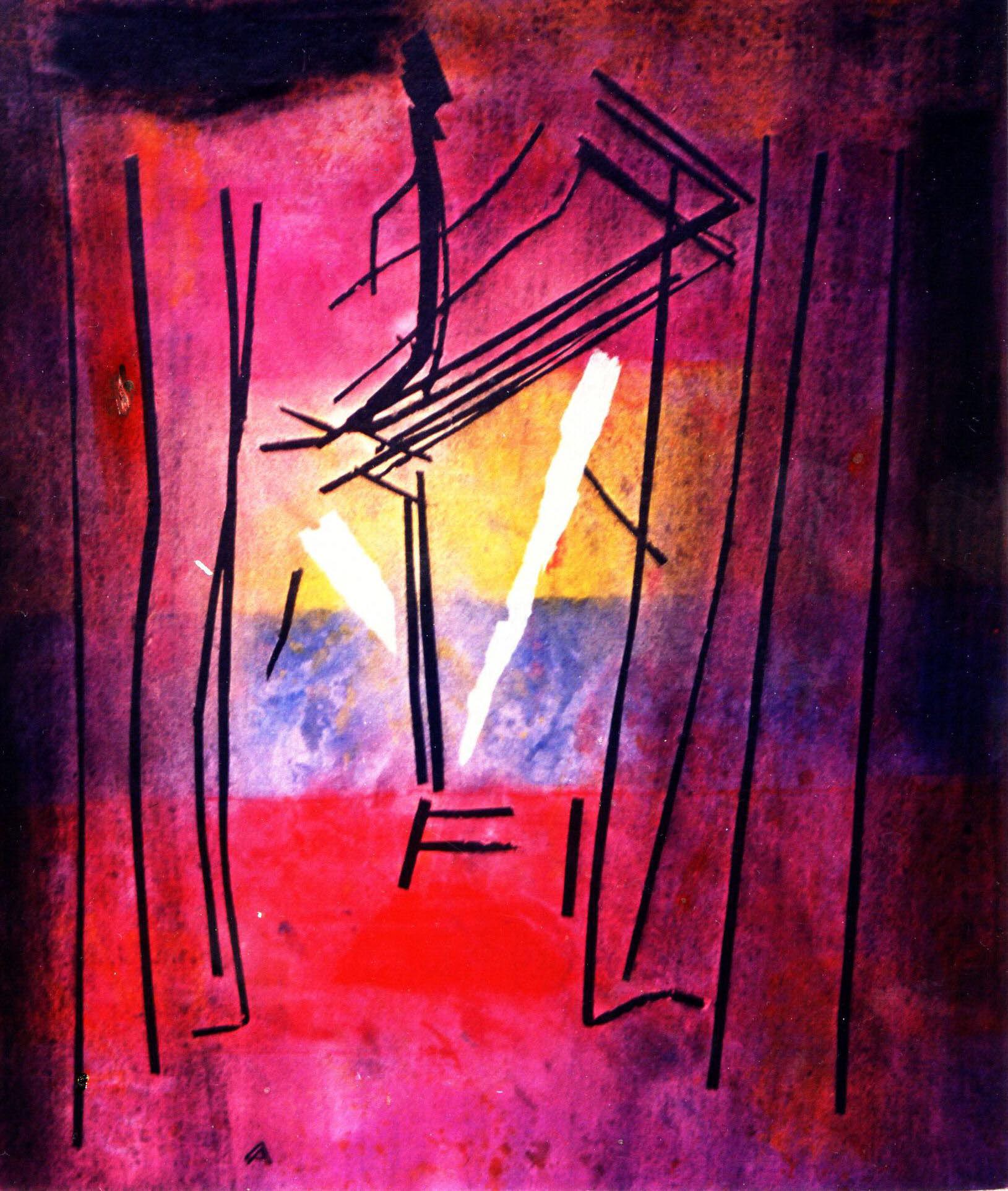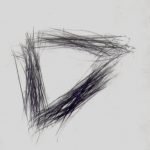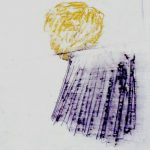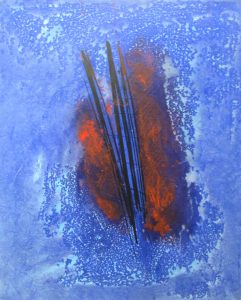Drawing or research
Research is not an exercise in grammar but implies wisdom, attitude, a demystified view of the world that excludes successes in a time useful for running thought without precise pre-ordering. Drawing it’s important.
Doing research in art with drawing means obeying history, being outside, finding a place of incessant and necessary formal invention, a singular field of action as in the novel which is not the sequel of poetry by other means but far from the poetry of the poets. It is to invent a personal reflection, to understand history as an enlightenment that leads to truths by inserting doubt, ambiguity, paradox and interrogation into our certainties. It means tearing the curtains of the interpretations provided by society with the wild and parasitic proliferation of works, through a wandering thought, diversified with short sequences of good vigor, of counterpoint, of echo, of return, of rediscovery.
The fluid condition of thought in disordered signs is prefigured similarly to a congestion of superimposed images that offer themselves with their characteristic opportunities. Through the process of non-deductive reasoning, where all the premises are not certain but some probable, but abductive, that is, without rules of frequency, probability, one has the expectation that it is set in search of the sign. In the unfolding of the mental process where the traces fall from the mind, on the white surface like the seed on the earth, we approach it by necessity of realization to the tactile mode of manipulation with the drawing. We find ourselves in opposition to the use of the word that corresponds to an image of a notion or action symbolizing uselessness and inconsistency, therefore antithetical to reality and to the concreteness of working. In this movement of thought, the image becomes an act by opening a window on the idea of structure and introducing an object into body of the language. In the still unstable condition, fragments are added and something is configured that requires other material, other splinters or shreds. In precariousness, equilibrium is broken, but instinctively the operation is restarted as if the important thing was not obtained but it reunites and it reborn in an infinite way, something that is hidden as the meaning.
What interests the artist is the moment in which, through trial for trial and error, things are born in uncertain working conditions in the continuous research that succeeds in channeling the creative fervor of the design that leaves the trace.
In the canvas, as in a “courtyard of words”, in a time of memory without seals the de-line signifies reality, penetrates its secrets, and becomes aware of an underlying labyrinth. These signs do not contain the ambiguity of gestures, but rather the conscious processing of doing, distilling images and determining the authenticity of language. The sign marries color, it does not freeze, but from this it acquires value.
The color-sign set with its density, thickness, rips and sudden revelations reveals a cosmic sensualism. In “poetic Almanac” 1989 cm. 50×40, the colors are lyrical joints, in “Effimero” 1984 cm 100×80, through the color makes the suggestion of inert time.
Disegno ovvero ricerca
La ricerca non è un’esercizio di grammatica ma implica saggezza, attitudine, un punto di vista demistificato sul mondo che esclude i successi in un tempo utile per far correre il pensiero senza un preordinamento preciso.
Fare ricerca nell’arte significa obbedire alla storia, è situarsi fuori, trovare luogo di incessante e necessaria invenzione formale, un campo d’azione singolare come nel romanzo che non è il seguito della poesia con altri mezzi ma lontano dalla poesia dei Poeti. E’ inventare una riflessione personale, capire la storia come un’illuminazione che porta a delle verità inserendo nelle nostre certezze il dubbio, l’ambiguità, il paradosso, l’interrogazione. Significa stracciare le tende delle interpretazioni fornite dalla società con la proliferazione selvaggia e parassitaria di opere, mediante un pensiero che vagabonda , si diversifica con sequenze brevi di buon vigore, di contrappunto, di eco, di ritorno, di riscoperta.
La fluida condizione del pensiero in disordinati segni si prefigura similmente ad una congerie d’immagini sovrapposte che si offrono con le loro caratteristiche opportunità. Mediante il processo di ragionamento non deduttivo , dove non tutte le premesse non sono certe ma alcune probabili, ma abduttivo cioè senza regole di frequenza, probabilità, si ha l’aspettativa che si attaglia alla ricerca del segno. Nello svolgersi del processo mentale ove le tracce cadono dalla mente , sulla bianca superficie come il seme sulla terra, ci si avvicina per necessità di realizzo al modo tattile della manipolazione. Ci si trova in contrapposizione all’uso della parola che corrisponde ad un’immagine di una nozione o azione simbolo di inanità e inconsistenza quindi antitetica alla realtà e alla concretezza dell’operare. In questo movimento di pensiero l’immagine diventa un atto aprendo una finestra sull’idea di struttura e introducendo nel linguaggio del corpo un oggetto. Nella condizione ancora instabile si aggiungono dei frammenti e si configura qualcosa che richiede altro materiale, altre schegge o brandelli. Nella precarietà, l’equilibrio si rompe ma istintivamente si ricomincia l’operazione come se l’importante non fosse l’ottenuto ma cio’ che riunisce e rinasce in modo infinito, qualcosa che è nascosto come il significante
Drawing, Ambrosio Paolo, 1981, cm. 29,5×21
Drawing, Ambrosio Paolo, 1981, L’Atmosfera gassosa del presentimento, cm. 50×35
Quello che interessa l’artista è il momento nel quale, attraverso il processo per prova ed errore, nascono le cose immerse in incerte circostanze di lavoro nella continua ricerca che riesce a canalizzare il fervore creativo del disegno che lascia la traccia.
Nella tela, come in un “cortile di vocaboli”, in un tempo della memoria senza sigilli il segno de-linea la realtà, ne penetra i segreti, e prende coscienza di un sotteso labirintico. Questi segni non hanno in sé l’ambiguità del gestuale, sono bensì elaborazione consapevole del fare, distillano le immagini e determinano l’autenticità del linguaggio. Il segno sposa il colore, non vi si congela, ma da questo acquisisce valore.
L’insieme colore-segno con la sua densità, spessore, squarci e le rivelazioni improvvise, rivela un sensualismo cosmico. In “Almanacco poetico” 1989 cm. 50×40, i cromatismi sono articolazioni liriche, in “Effimero” 1984 cm. 100×80, attraverso il colore si rende la suggestione del tempo inerte.
 Ambrosio Paolo Almanacco poetico 1990
Ambrosio Paolo Almanacco poetico 1990
cm. 50×40 mixed media on canvas
Ambrosio paolo Effimero 1984,
cm. 100×80 mixed media on canvas



